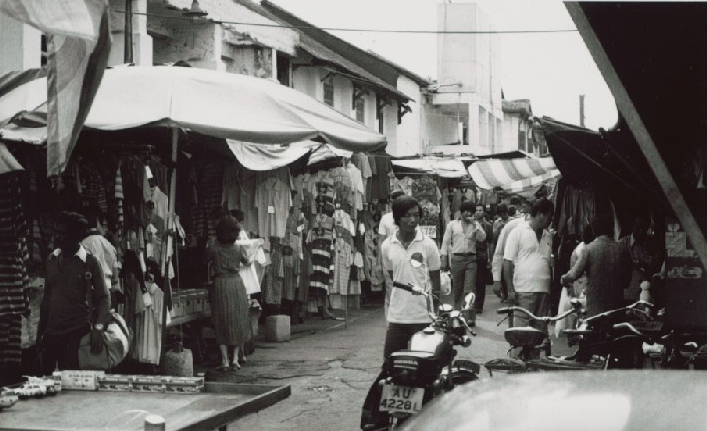Located between Jalan Besar and Rochor Canal Road, the flea market at Sungei Road was Singapore’s largest and oldest flea market. While the exact origin of the flea market remains unclear, historical records have shown that the flea market began as a small trading spot that sprouted along the river during the mid 1930s.
In 2016, the National Archives of Singapore conducted video interviews from 15 vendors at Sungei Road Flea Market, including both long-time vendors and some younger ones, on their experiences in the flea market.
In its early days, the flea market operated between 3.00pm to 6.00pm and its operating hours could have resulted in its nickname "Robinson Petang" or "Robinson in the afternoon". The nickname was probably a tongue-in-cheek reference to the Robinson Department Store which catered to the more well-to-do in Singapore.
During the Japanese Occupation (1942 – 1945), the flea market at Sungei Road was very popular as many locals (especially the poor) would flock to the market to purchase cheap household items and other merchandise which were often in short supply.
After the Japanese Occupation, the Sungei Road vicinity became home to an untidy but sprawling flea market which subsequently led to its new nickname as "the Sungei Road Thieves Market". The new nickname could be attributed to the market’s growing reputation as the place where stolen, smuggled and illegal goods were being peddled.
During the 1950s, the flea market at Sungei Road offered bargains for second-hand and vintage goods. Many of the peddlers were "karung guni" men (or "rag and bone" men) who would collect or salvage items that were discarded or sold at a low price by owners, and then display their finds of the day on makeshift tables or blue-and-red canvas sheets.
Due to non-existent rent and the low cost price of the goods on sale, the prices for goods offered at the flea market were extremely competitive. There would be no receipt issued, no testing of electronic appliances and no refund for the goods purchased. Nevertheless, the flea market grew to become one of the most popular bazaars in Singapore for second-hand and vintage goods.
A documentary by Dinosaur Production
from the Nanyang Technology University’s Wee Kim Wee School of Communication and Information.
When the British army withdrew in the late 1960s, the flea market at Sungei Road became the “go-to” place for the purchase of army merchandise such as uniforms, army gear and other army related goods.
During the 1970s, the flea market at Sungei Road experienced a decline as resettlement and urbanization efforts resulted in the relocation of peddlers into government-built markets. However, it was only during the 1980s that the results of the aforementioned efforts became more apparent.
In August 1982, many of the stalls and make-shift huts were pulled down but within a year, the peddlers were back at their original spots peddling their wares. During that period, they often had to play a game of “hide-and-seek” with government officials with many of them gathering up their goods and fleeing whenever the aforementioned officials appeared.
By late 1989, many of regular peddlers were issued free temporary permits for them to sell second-hand or used merchandise at the flea market and in 1994, the flea market was once again cleared due to developments around Rochor Canal. Despite the numerous setbacks, the resilient peddlers would always return to Sungei Road and restart the flea market.
A documentary by The Forgotten People
from the Nanyang Technology University’s Wee Kim Wee School of Communication and Information.
In July 2011, the Sungei Road Free Hawking Zone was reduced to half its size in order to make way for the construction of the new Sungei Road MRT station. The space allotted for each peddler was limited to a metre-by-metre and offered on a first-come-first-serve basis. In total, 336 lots were demarcated for an estimated 400 peddlers. The peddlers were mainly low-income, blue-collar and retrenched/retired workers in their 50s and 60s. They were permitted to sell only second-hand or used merchandise.
Despite the reduction, the flea market at Sungei Road continued to offer second-hand goods, antiques, electronic appliances, books, jewellery, old clothing and shoes, as well as collectibles such as cassettes, old records, toys, coins, stamps, currency notes etc. The stalls operated from 1.00pm to 7.00pm daily.
The Sungei Road flea market ceased operations on 10 July 2017. The site where the flea market is located will be used for ground preparation works to facilitate future residential development use.
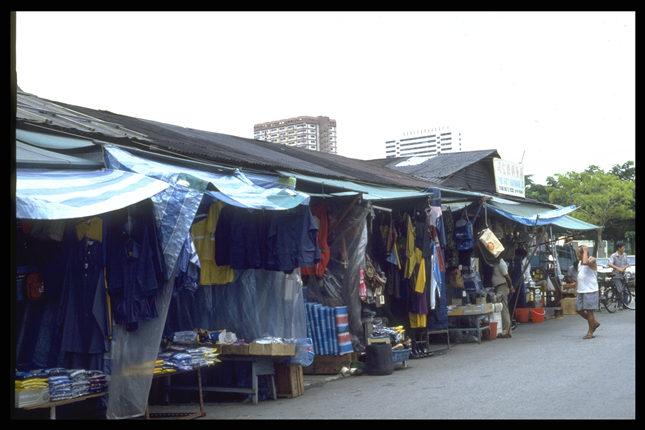
Courtesy of National Archives of Singapore.
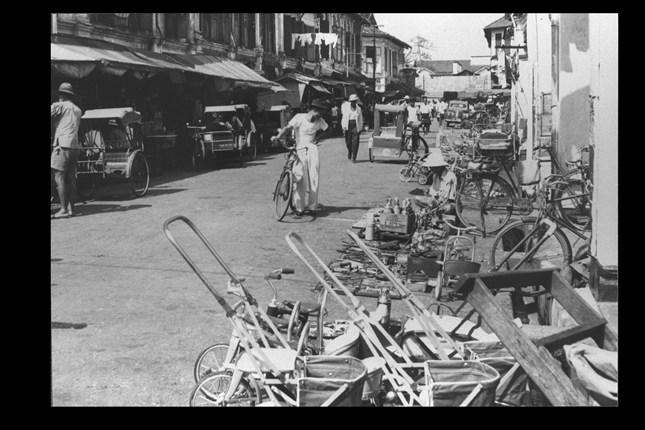
Philip B Growler Collection, courtesy of National Archives of Singapore.
.ashx?h=430&w=645)
Courtesy of Mr Quek Tiong Swee.
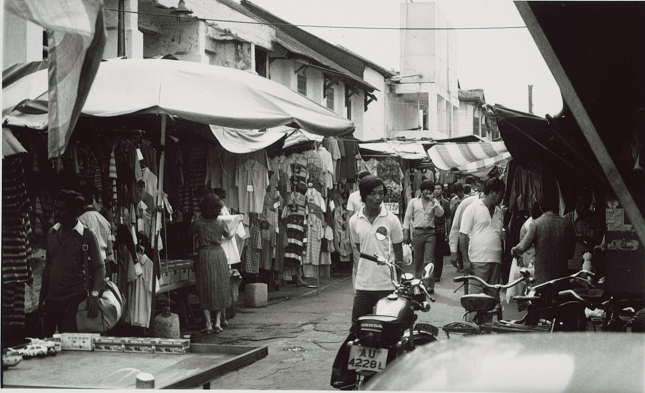 Street scene of Sungei Road Flea Market in the 1980s.
Street scene of Sungei Road Flea Market in the 1980s.Collection of National Museum of Singapore
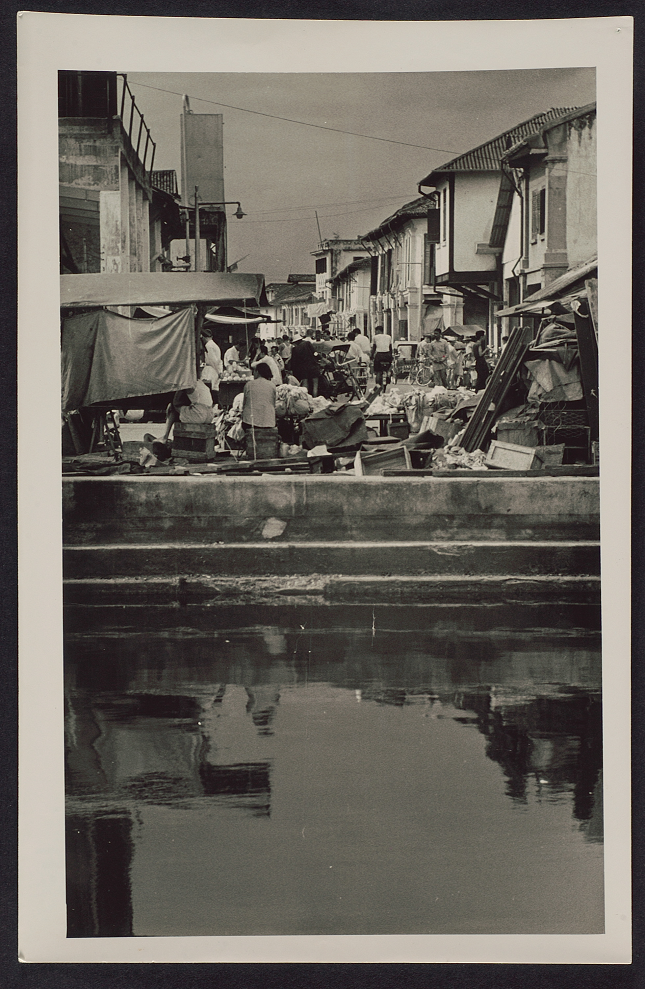
Collection of National Museum of Singapore




